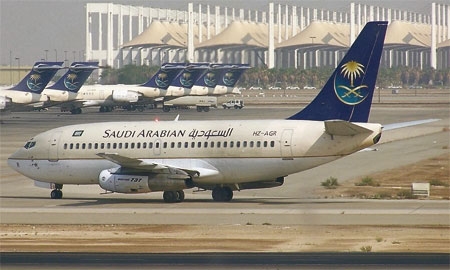Saudi Arabia enjoys one-fifth of the planet’s oil reserves, and ranks as the largest exporter of petroleum in the world. The country is expected to continue booming, fueled by two massive fiscal spending packages worth a combined $129 billion. And infrastructural improvement projects already underway have a total value of $600 billion.
One of the key elements of the transformation of the Saudi economy is development and improvement of infrastructure at all levels, and ensuring that new infrastructure is added to accommodate the rapid changes taking place in the country – changes which include significant population growth.
Under the leadership of King Abdullah Bin Abdulaziz Al Saud, the kingdom has made huge investments available for industrial infrastructure development, laying the foundations for the kingdom’s economic strategy over the next 50 years, actively seeking to upgrade and improve its rail, port, airport and other transportation infrastructure.
According to figures released by the National Commercial Bank (NBC), the Gulf kingdom’s largest banking entity, during the first half of 2011 the kingdom awarded contracts worth a total of over SAR 84 billion ($22.4 billion), a 156% increase over the same period of the previous year.
This is a result of the increased spending on infrastructure enveloped in the country’s latest five-year development plan. Not since the country’s first two plans, which covered the 1970s, had such emphasis been placed on infrastructure.
The move comes as a result of the government’s desire to fulfil demands for improved services in infrastructure, power and real estate sectors, arising from needs of interconnectivity and urbanization. Such projects include the North-South Railway, the Mashaaer Mugaddassah Metro Project, the Haramain High-Speed Railway also known as the “Western Railway,” and the four Economic Cities.
The construction of universities (KAUST, which opened in 2009, is a fine example) represent expenditures on both hard and soft infrastructures.
Over 31% of the contracts awarded during the second quarter of this year – a staggering $34,5 billion, 43% more than the same period of 2010 – were directed towards infrastructure-related sectors.
NCB said the surge boosted its Construction Contracts Index (CCI) to an overwhelming 205.3 points at the end of the first half of this year, from 90.36 points at the end of the first half of 2010.
These figures clearly reflect the wellbeing experienced by the construction industry during 2011 throughout the country. Ridyah, the kingdom’s capital, was allocated 26% of the contracts, the highest share awarded to one region, while the Eastern Province received 25%, mainly for industrial, water and urban development contracts.
To emphasize the importance the government is placing on infrastructure, Jeddah just hosted, on December 11-14, the Saudi Infrastructure Forum and Exhibition 2011, a premiere international event showcasing major investment opportunities and infrastructure projects. The event highlighted the kingdom’s encouragement of private and foreign investment in the form of joint ventures with Saudi public and private companies.
The rate at which contracts were distributed in 2011 presents a ‘need it fast’ and ‘need it now’ trend. In the process, increased opportunities developed for both large and SME players.
Expected to continue growing over the coming years, due mainly to an increasing population and strong demographics – over 60% of the Saudi Arabian population is under 25 – demand for both social and economic infrastructure is ensured.

0 COMMENTS